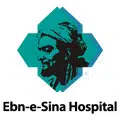
Vascular Surgery
The Vascular Surgery Clinic of Ebnesina Hospital provides a wide range of vascular surgery services to clients with the help of highly specialist doctors.
Together with our well-qualified nursing staff, our highly trained and experienced medical specialists will provide you with the latest therapeutic treatment that meets the standards set by medical professional associations, using state-of-the-art medical equipment.
You, the patient, are the focus of all our activities. Our team is constantly striving to improve the state of your health and to make your hospital stay as pleasant as possible.
Depending on the individual situation, treatment options include endovascular surgery, open surgery, or in collaboration with our partners in the internal medicine department, pharmacological therapy. No matter your situation, you will receive an optimal treatment solution from a single source.
Some factors that increase the risk of vascular diseases:
age
Family history of cardiovascular diseases
Illness or injury
pregnancy
Sitting, standing or lying down for long periods of time without activity
smoking
obesity
Blood pressure, diabetes, high cholesterol and other things that may affect the health of the cardiovascular system
Lack of physical activities and sports
How to Diagnose
In order to be diagnose vascular disease, a person must be evaluated by a vascular surgeon, which includes medical records and a physical examination. A vascular surgeon also treats vascular disorders with non-surgical methods, including drug therapy and controlling risk factors.
Symptoms of vascular diseases depend on the affected artery. These diseases sometimes cause pain, but in general, we can say that there are usually no specific symptoms.
A doctor has different ways to feel, hear, measure and even see an arterial blockage. Most cramping is preceded by palpation.
Blockage of the artery can lead to a sound similar to the sound of water in a rushing river. The doctor can hear this sound with his ears or use sound amplifiers to hear it.
There are also other tests to determine the normality of blood flow in the arteries, which can be mentioned as follows:
Ultrasonography
M.R.I
CT Scan
Angiography
Lymphangiography
Doppler ultrasound
There are no symptoms in the limb or organ affected by a blood clot until the clot becomes large enough to block blood flow. After the flow is blocked, the following symptoms may occur:
Pain
Sudden swelling in the affected limb
Color change to reddish blue
Enlargement of superficial veins
Skin warmth


